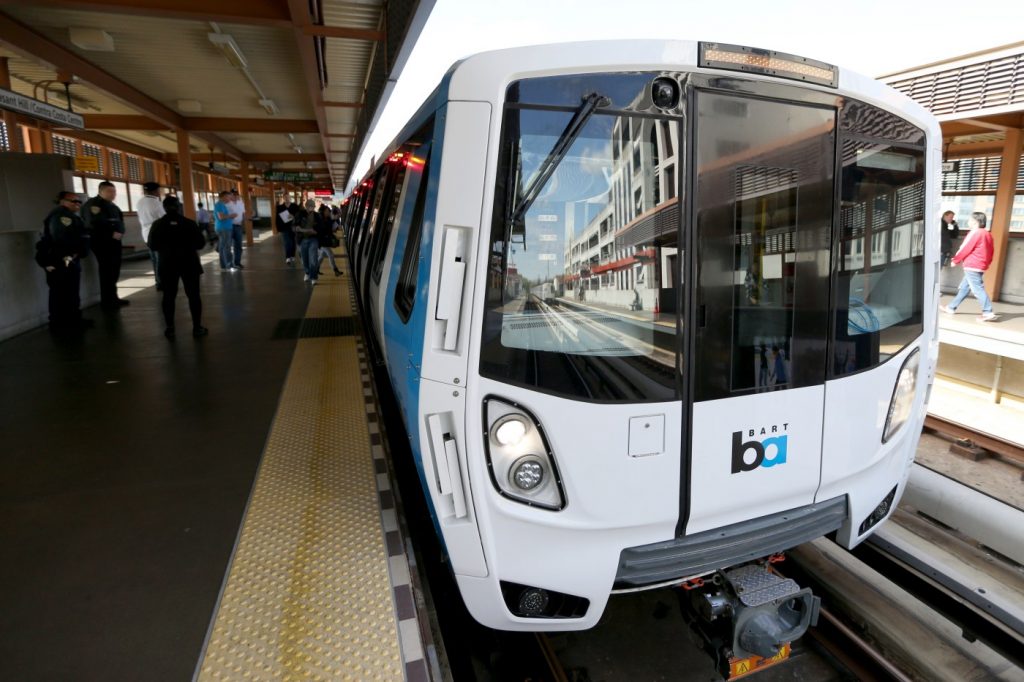The Santa Clara Valley Transportation Authority is betting on a hefty sum of money from the federal government to help complete the $12.75 billion San Jose BART extension. But if those dollars don’t come in, it appears the transit agency doesn’t have a backup plan.
For more than two decades, transportation officials have envisioned completing a ring of rail around the Bay Area. In 2020, BART reached its southernmost point, opening stations in Milpitas and the Berryessa neighborhood of San Jose. But now VTA, the agency tasked with building out BART, has its eyes set on the final leg: a six-mile, four-station extension through downtown San Jose and up to Santa Clara.
The megaproject’s cost has ballooned in the last decade, skyrocketing from $4.4 billion to a more than $12 billion estimate made earlier this year. The project has also faced repeated delays, going from a 2026 opening date to 2037.
VTA has already earmarked dollars from state and local sources that will cover slightly more than half of the project costs. But this year, the agency will submit a grant application to the Federal Transit Administration asking them to fund the other 49.4%, or $6.297 billion.
But what if VTA doesn’t get the money they need for the BART extension? General Manager Carolyn Gonot told the Mercury News this week that contingency planning isn’t on their radar at the moment as their “first priority” is to work on the funding plan with the FTA.
“We understand we would potentially need to do that, but it isn’t a focus of ours right now,” she said of creating a backup plan.
It’s possible the FTA doesn’t put down $6.297 billion for the project, Gonot admits, as other megaprojects have been getting less funding than they ask for “because (the agency) is trying to make sure they can get as many projects funded with the dollars that they have out of the infrastructure program.”
Santa Clara Councilmember Suds Jain, who sits on the VTA board, believes “there’s a good possibility that the feds won’t even give us 45%.” If that happens, he feels that “staff hasn’t really given us options for contingency,” such as dropping one of the four stations.
“This BART project is sucking all of the transit money out of everything,” Jain said, referencing two key VTA funding sources that are being utilized to build the project.
Just last week, the FTA committed $3.4 billion to the Transbay Downtown Rail Extension Project, which will extend Caltrain from the Fourth and King streets station to the Salesforce Transit Center in downtown San Francisco. Project designers had also asked the feds to pay for 49.4%, or $4.077 billion dollars, of the costs — but in the end, they received only 41% of their request.
“I don’t know if we would be able to go at a 41% level,” Gonot said when asked about the Transbay funding. “We are working with the Federal Transit Administration as to what we could possibly get, but I’m not looking at a 41% level.”
Gonot could not say what the minimum dollar threshold from the FTA would be to ensure the project pencils out, stating that the feds are still in “the review stages of our financial plan.”
Gonot’s comments come several weeks after San Jose Mayor Matt Mahan pressed VTA officials at a recent committee meeting over whether they were “scenario planning and prepping so we can quickly adjust” if the full funds don’t come through.
Mahan told The Mercury News that VTA officials need “to do the financial analysis to understand from a contingency planning standpoint where the dollars would come from to fill the gap and at which point if VTA is unable to fill that gap, we would need to talk about the overall design of the system.”
“I just want to make sure that when we get the number from the federal government, we’re either able to move forward immediately on the current design, or we have a menu of alternatives that are ready to go and we don’t need another six months of analysis to get to that point,” he said.
While Gonot was unable to comment on different projections, Greg Richardson, VTA’s chief financial officer, said at the May 9 meeting that they’ve “got the group running different scenarios of different percentages, the impact it would have on the funding element and the impact it would have if it gets to a certain level on project costs.”
Santa Clara County Supervisor Cindy Chavez, who serves as the VTA board chair, said that one of the reasons the extension cost is so high is that the federal government, after its own evaluation of the project, asked them to increase its estimated cost. Tom Maguire, VTA’s chief megaprojects delivery officer, said at an April board meeting that the agency has $2.7 billion in contingency funds.
“What it means is that it’s a pretty safe bet that as we move forward, we’re going to be able to live within that budget, which is why I’m really suggesting that we really encourage the federal government to invest,” Chavez said.
The agency has recently increased the amount of money it would draw out of 2000’s Measure A — a 30-year half-cent sales tax for a number of capital improvement projects and operations — and 2016’s Measure B, another 30-year half-cent sales tax to improve transit, highways and expressways. VTA officials have said they’d likely dip further into the Measure A coffers if they need to as Measure B funding has already been tapped out.
Gonot was unable to say what projects being funded by Measure A would be impacted if this happened.
Jain isn’t the only board member that is sounding the alarm on VTA’s lack of a fallback plan. San Jose Councilmember Dev Davis said she has “not seen enough detail yet to be comfortable that we have sufficient contingency planning.”
The councilwoman said that while she believes the board should have already seen those details, she doesn’t fault Maguire and blames past project leadership.
“I think it’s appropriate that the public is concerned about the state of such a large project and the transparency of the project,” Davis said. “The board and management now are in agreement and rowing in the same direction on improving transparency and ensuring that we have not just adequate, but appropriate levels of control on this project. Going forward, the public can expect much better than they have received with prior project leaders on those fronts.”


